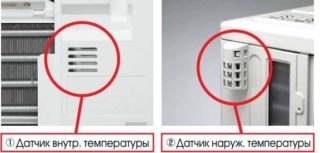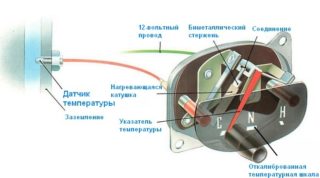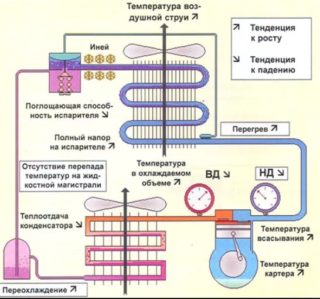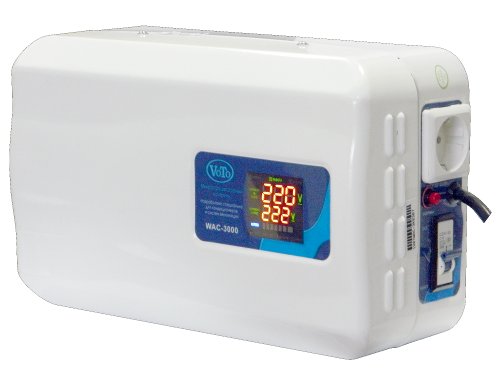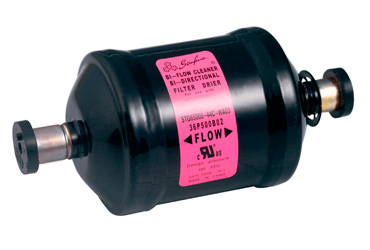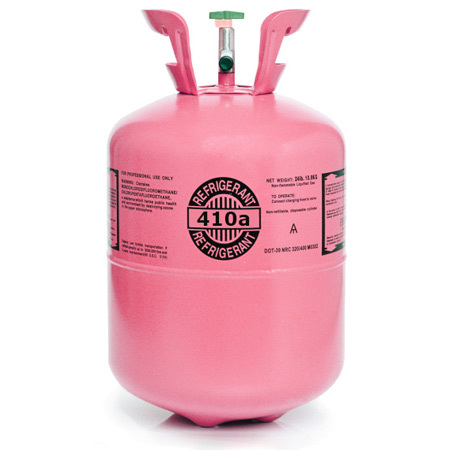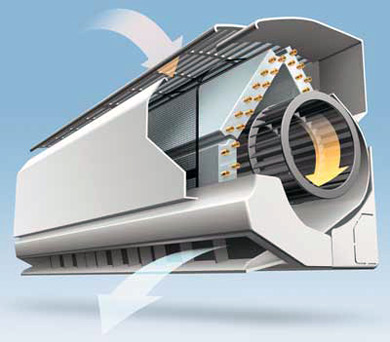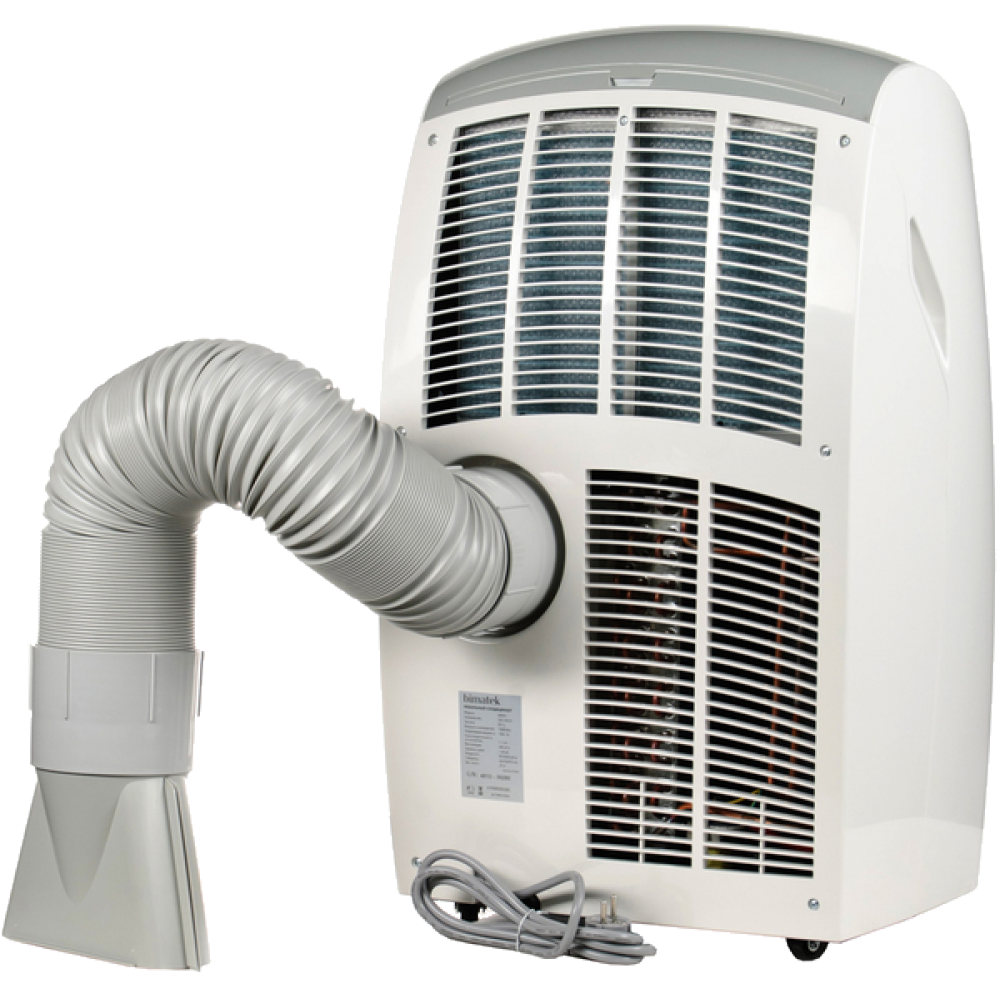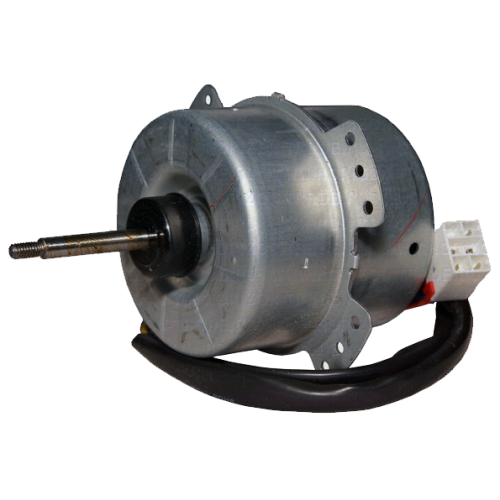Climate control systems have become a common feature of apartments, offices, commercial and industrial buildings. Air conditioners of various brands and models cool rooms, humidify and purify the air. The operation of the equipment is controlled by electronic control units and sensors. Based on data from devices that measure temperature and pressure, the compressor is switched on and off, the most effective operating mode of the entire system is selected.
Varieties of sensors
- in cooling mode from + 18 ° to + 45 ° C;
- in heating mode from -5 ° to + 18 ° C.
Premium models have a wider range of thermometer readings from -25 ° to + 55 ° C. The air conditioner temperature sensor determines the parameters of the air outdoors and indoors, and also collects data on the system nodes.
Another group of measuring instruments controls pressure. The devices are installed in the freon line and open the control circuit when the indicator deviates from the norm.
Sensors differ in the level of design complexity, the simplest are relays, and the most progressive are chip-based systems. The devices prevent damage to an expensive compressor.
Air purity is one of the parameters to which the air conditioner operates. Multi-stage filtration systems allow you to bring it to a safe and comfortable performance. Special sensors detect the level of carbon dioxide, cigarette smoke, ozone, dust, various impurities and odors. When certain substances appear in the air, the device gives a signal to the filtration system. Ionizers, photocatalytic and bactericidal cleaners eliminate odors, smoke, bacteria and allergens. As cleaning progresses, the color indication of the sensor changes. These devices are rarely installed, they are equipped with models with multi-stage filtration.
Air conditioner temperature sensors
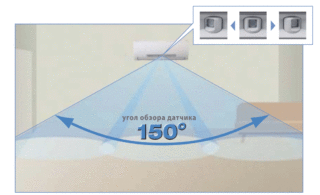
A drop-shaped device is used to measure indoor and outdoor air parameters. The NTS temperature sensor for the evaporator and condenser is manufactured in the form of a cylinder. On the back of the device there is a connector for connection to the control board, the parts are connected with a wire.
The main characteristic of the temperature sensor is the nominal resistance measured at 25 ° C.
For specific devices, it depends on the technical features of the equipment.Measuring devices are installed in the external and internal block of the split system.
Indoor module:
- The room temperature sensor detects the operating mode of the compressor.
- There are two indicators on the evaporator, the device at the midpoint turns off the compression unit if the temperature of the heat exchanger falls below 0 ° C. This prevents icing of the assembly. A second sensor monitors data at the evaporator inlet.
- A thermal sensor built into the fan motor prevents overheating and fire in the unit in the event of a short circuit.
- The terminal block thermostat acts as a fuse for temperatures up to 90 ° C.
Outdoor module:
- Condenser temperature control sensor - based on its data, the refrigerant pressure changes in the system. To take accurate readings, several sensors are installed at different points of the heat exchanger.
- Outside air temperature sensor - prevents the system from turning on when the temperature is below the operating limit. The climate system blocks the start at low negative thermometer readings.
- The compressor discharge temperature sensor helps to determine the pressure, if the standards are exceeded, the system issues an error code.
- A device that duplicates the operation of the low pressure sensor is installed on the gas main.
- The fan motor and terminal block are equipped with temperature sensors that are triggered when the temperature is strong.
Possible malfunctions and replacement
If the sensors are damaged, the air conditioner will lose its cooling function.
The sensor devices are visually inspected for wire damage. In the absence of external faults, proceed to diagnostics:
- The sensor connector is disconnected from the board.
- The resistance of the device is checked with a multimeter or ohmmeter, ringing its contacts at minimum and maximum values.
- The data will appear on the screen, which must be compared with the nominal values indicated in the characteristics of the model. Differences in numbers indicate a breakdown of the part.
- To eliminate the malfunction, the temperature sensor must be replaced. This part cannot be repaired. A similar brand of device is purchased, designed for the nominal resistance of the unit. For indoor module within 5-20 KOhm, for outdoor 10-50 KOhm.
Air conditioner pressure sensors
The low pressure sensor of the air conditioner turns off the climatic equipment when there is a lack of freon. Low pressure caused by lack of refrigerant threatens unwanted air leaks. The minimum reading is 0.17 bar. The A / C high pressure sensor is installed in the liquid pipe. It breaks contact when the pressure level rises above 27 bar. The devices protect the compressor motor from dangerous overloads.
Air conditioners are equipped with a different number of sensors and temperature sensors. Their presence allows the technician to carry out self-diagnostics and precisely adjust the set parameters.

